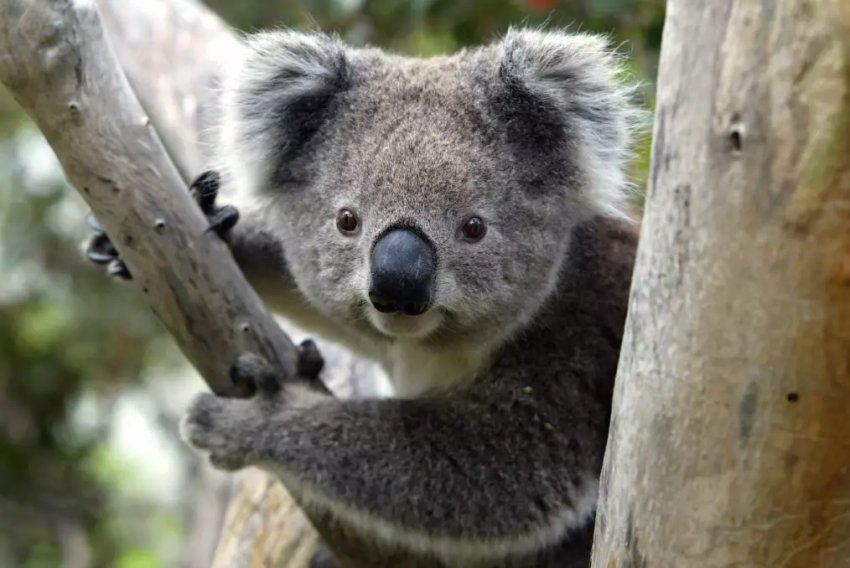
Conservationists say the Strzelecki Ranges hold “one of the most important koala populations in Australia”, after completing surveys that may suggest a population of several thousand koalas across the region.
Surveys conducted in Victoria's Strzelecki Ranges and South Gippsland over 2013–2016 indicate a population of almost 1000 koalas in the 10,500 hectare area surveyed, koala expert Dr Steve Phillips told Green Left Weekly.
Anthony Amis from Friends of the Earth conducted many of the surveys along with Suzie Zent from Friends of Gippsland Bush. Amis told Green Left that Phillips' calculations indicate koalas are resident in 28% of the available habitat. leading Amis to estimate a population of perhaps 2000–3000 koalas surviving in the region overall, which has “about 40,000ha of native vegetation, some of very poor quality”.
The koalas were observed to show preference for a range of Eucalyptus species, including mountain grey gum, bluegum, strzelecki gum, and swamp gum as well as manna gum.
“This is important as most people associate Koalas only with Manna Gums,” Amis said.
As Green Left previously reported the Strzelecki koalas are the only known original, endemic, genetically diverse population of koalas in Victoria and South Australia: all other populations in the two states are descended from a tiny handful of koalas saved from hunting in the early 20th century on offshore islands.
Phillips said the Strzelecki population was probably pushed to the brink of extinction too, but survived in remote forest patches. These koalas recolonised wider areas after the end of hunting.
“One of the potential advantages of these widely dispersed refuges is they each contained a unique genetic identity. Once they reconnected these identities mixed again and created a unique genome,” he said.
The genetic value of the Strzelecki population, containing much of the original Victorian koala genome, was only discovered in 1990 by researcher Bronwyn Houlden.
“It could be one of the most important koala populations in Australia,” Amis said, “due to the fact that it has survived even after the destruction of almost all of its habitat over the past 100 years. The reason why the animals have survived in this region could hold the key for protection of other populations as well.”
Despite the vulnerability of koalas to climate change, the Strzelecki/South Gippsland population is not protected.
Zent told Green Left that “the nomination to have the Strzelecki/SE Gippsland koala protected under the Victorian Flora and Fauna Guarantee Act was rejected. Also our endeavour to have it protected under the Commonwealth Environment Protection and Biodiversity Conservation Act was rejected on the grounds that there are ample numbers in Victoria. This is a highly politicised issue … The state government and agencies have known about the importance of the Strzelecki/SE Gippsland koala for decades and have done nothing to protect it.”
NSW and Queensland koala populations, officially listed as threatened, are thought to be declining in all bar one region. Climate change is making their habitat less survivable in the western parts of those states, while populations in wetter coastal forests are vulnerable to logging, clearing and urban growth pressures.
The Strzelecki koalas largely occupy habitat protected under the “Cores and Links” agreement in 2008 between plantation manager Hancock Victorian Plantations and the state government. Some of this is now becoming an official conservation reserve.
The part of the population living on the coastal plain of South Gippsland occupies a much more fragmented, unprotected landscape, Amis said. “In South Gippsland most of the surveyed sites were reserves, roadside vegetation and vegetation along the South Gippsland Rail trail. Most of the reserves in South Gippsland are isolated and surrounded by farmland. Animals dispersing from these reserves are then vulnerable to road kills etcetera. Fire is also a big problem, including burnoffs in autumn in reserves of the region.”
Apart from recommending EPBC Act protection for the population as a whole, Amis recommends work to restore habitat for the lowland South Gippsland population, especially in the western part of the area. “A lot of tree planting needs to occur to provide corridors for the animals to move through. One positive is finding koalas in areas that had been replanted by local groups 20–30 years ago in places such as Ryanston,” he said.
Phillips agrees that conservation management is essential. “This is a small population by conservation standards,” he said. “It needs to be managed carefully for threats like fire and climate change. We just can't sit back and relax knowing the population is there, in this day and age. We could lose half of it in one big fire.”